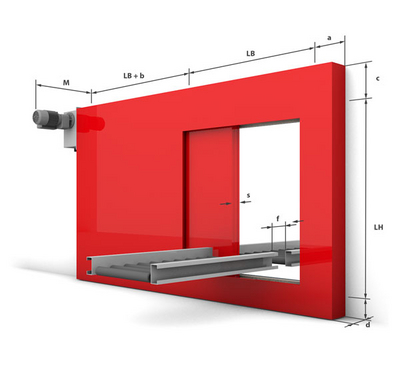
Product description
A versatile solution with smooth surfaces for high aesthetic standards: The robust slider closure features an encapsulated design. When parked, the slider is positioned inside the casing. the system consists of a load-bearing steel structure lined with Promatect H panels. Walls can be completely replaced by storey-high elements. Universal-B is ideally suited for interrupted and separated conveyor systems, e.g. belt, roller and suspension chain conveyors, sorters and newspaper conveyors.

Type | Fire protection closure as part of track-bound conveyor systems |
Closing direction | from left to right • from right to left • From top to bottom • from the bottom to the top |
Fire resistance | T 90 |
Re-opening | manual |
Conveyor system | Interrupted conveyor system • Continuous belt conveyor system • Continuous travelling carriages • Sorter • Newspaper conveyor • Continuous suspension chain conveyor • Continuous roller conveyor system • Continuous conveyor system • Sloping track • Round belt conveyor |
Downloads
Required wall quality | |
|---|---|
Masonry | d ≥ 240 mm |
Concrete | d ≥ 140 mm |
Aerated concrete | d ≥ 200 mm |
Technical feasibility | |
|---|---|
LH | 200 mm - 2700 mm |
LW | 200 mm - 2500 mm |








